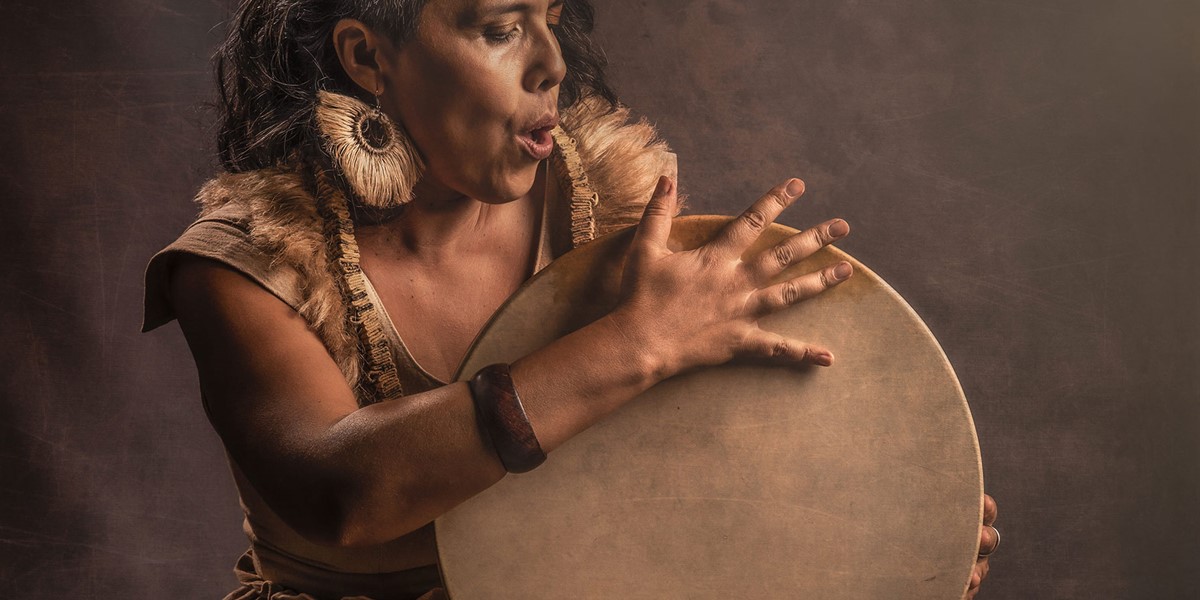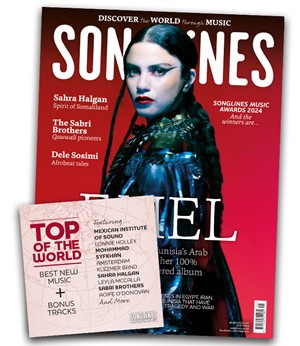Wednesday, March 6, 2024
Soema Montenegro: “My music can’t be pinpointed or catalogued, I’m very experimental”
Soema Montenegro tells Silvia Rothlisberger about the ancestral connections and magical realism influencing her new album. “I’m not transmitting musical notes, but sensations,” she explains

“My voice is my instrument,” states Argentine folk artist Soema Montenegro. “To me the body is also a territory where I can find sounds,” she continues. “When I find it hard to put into words what I want to say or what I’m feeling, I use sounds in my music: there’s a scream, there’s a gasp, a noise made with my voice. I use these sounds to express what I can’t say with words.” It’s no coincidence that Montenegro is known as the ‘Shaman-Poet’.
“My partner is a musician. My daughter sings and plays the ukulele. Music always centres us, frees us, and to me especially, singing is an absolute source, everything starts from the voice, then it transforms into poetry and then the song emerges,” says Montenegro via Zoom from her home on the outskirts of Buenos Aires where she lives with her partner, composer Jorge Sottile, their daughter Amaru, and their two cats.
Montenegro vividly remembers the moment she decided to make music for the rest of her life at about the age of nine when music lessons arrived at her school. She was blown away by the sight of her music teacher singing and playing the guitar. “Music was happening in real life,” she recalls. “After this, my father bought me a guitar and I started to study music and to sing all the time. Music came to my life since I was a child and has stayed with me ever since.”
As a teenager, Montenegro studied composition at a music conservatory in Buenos Aires. Parallel to these studies she learned from different teachers about the voice, the body and sound. She studied different practices that had nothing to do with academia because “the conservatory here in Argentina, at least 20 years ago, had a very European approach to music, but I wanted to sing traditional music,” she explains.
This was especially significant as her musical heritage is deeply rooted in the north of Argentina, where on one side there’s the Brazil and Paraguay border, with jungle and mountains, and on the other side, the Bolivia and Chile border, the landscape shaped by arid mountains and the plateau.
A breakthrough came for Montenegro in 2010 when renowned filmmaker Vincent Moon made a short film about her. “He was like a godmother. I had just recorded my second album Passionaria and had left my job as a music teacher to dedicate myself entirely to music,” she remembers, laughing. After Moon published the video online it started to have an impact; Montenegro was contacted from all over the world and went on her first international tour. “I started to play a lot outside of Argentina, in fact we played more internationally than here in Argentina.”
Círculo Radiante is Montenegro’s fifth studio album and it’s precisely the landscapes, nature, sounds and people from her ancestors’ land in the north of Argentina that inspired it. “I feel that my ancestors walked these lands. I feel a very deep connection with that space.” The video for ‘Caminante’, the album’s second song, was shot near the town of Uquía in the Argentinian region of Jujuy, where a stunning canyon of red and pink colours spreads across the land. “It’s a place where memory is very much alive, where Indigenous people’s culture is very much alive. From the sounds of these territories, from their music there’s a lot of information imprinted, and I think that that information is very valuable,” Montenegro states. Living on the outskirts of Buenos Aires means that these two worlds collide in her music: “we work with a mix of cultures, blending Indigenous instruments with urban instruments: caja chayera, maracas, charango, chajchas and then we have the guitar, the bass, the drums, the bandoneón. We have other instruments that are more contemporary, like synthesizers.”
Círculo Radiante marks the evolution of her sound. Whereas previous works had largely been characterised by acoustic instrumentation, here she couples the modernity of electro-instrumentalisation with her own raw, ancestral approach to composition. “I was left with the desire to explore this fusion and this new album is all mixed with electronic sounds.”
What better match for this project than fellow Argentinian producer Leo Martinelli, who has connected Latin American folk and electronica through his own musical project, Tremor. “Leo captured the energy of each song and expanded the landscapes through electronic music,” Montenegro says.
As a concept for the album Montenegro and Martinelli played with Latin American magical realism, but taken to sound. Montenegro had many recordings from her travels, that were used as Foley sounds. Martinelli had in mind folklore from the 70s in Argentina: Los Jaivas, Domingo Cura, Jaime Torres, Mercedes Sosa. Montenegro explains, “I feel very identified with Latin American music, that’s the music I write. I take gestures of traditional folklore but I don’t respect any form in any genre, I’m always playing with the form.”
She tells me how the sounds she emits at the start of ‘Yo He Visto la Luna’ are related to the chest, heart and uterus. “It’s not a chant that I’m emitting only from my larynx, I’m not transmitting musical notes, but sensations.” ‘Punay’, she goes on to say, is a cover of Argentina’s folk legend Atahualpa Yupanqui. “I feel very close to him, as if he was someone I’ve met. When I listen to his songs, I can hear my grandmother telling me stories in the mountain, I can hear my aunts and uncles.”
‘La Huesera’ and ‘Toro’ are inspired by Mexico and Central America respectively. ‘La Huesera’ is a Mexican waltz about “renewal and transformation”; ‘Toro’ is a gleeful dance drawing from the rhythms and colours of the Caribbean of Central America, “the bull of this song is mythological, a dark figure to whom you surrender, you let go and dance and celebrate and give yourself to that energy,” Montenegro says.
Círculo Radiante (Radiant Circle) represents a sonic journey from northern Argentina’s ancestral lands to Caribbean shores. “My music can’t be pinpointed or catalogued, I’m very experimental. I’d say my work is Latin American contemporary music.”
Soema Montenegro will perform at Kings Place, London on May 17, as part of Songlines Encounters. To buy tickets, click here.
This article appears in the December 2023 issue of Songlines (#193) magazine. Never miss an issue – subscribe today
Want to DISCOVER the WORLD through MUSIC? Subscribe to Songlines' FREE newsletter here

